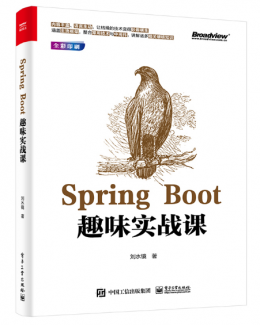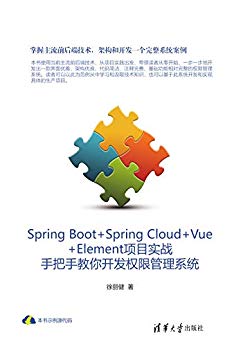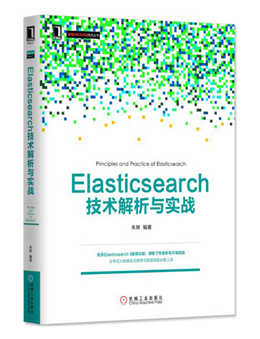本站精选了一篇相关的编程文章,网友厍泽惠根据主题投稿了本篇教程内容,涉及到ElasticSearch整合SpringBoot、ElasticSearch、SpringBoot、ElasticSearch整合SpringBoot相关内容,已被816网友关注,相关难点技巧可以阅读下方的电子资料。
ElasticSearch整合SpringBoot
前言
目前正在出一个Es专题系列教程, 篇幅会较多, 请持续关注码农之家
本节来给大家讲一下在Springboot中如何整合es~
本文偏实战一些,为了方便演示,本节示例沿用上节索引,好了, 废话不多说直接开整吧~
项目搭建
老规矩,先建maven项目,下面是我的pom.xml
<?xml version="1.0" encoding="UTF-8"?>
<project xmlns="http://maven.apache.org/POM/4.0.0"
xmlns:xsi="http://www.w3.org/2001/XMLSchema-instance"
xsi:schemaLocation="http://maven.apache.org/POM/4.0.0 http://maven.apache.org/xsd/maven-4.0.0.xsd">
<modelVersion>4.0.0</modelVersion>
<groupId>org.example</groupId>
<artifactId>springboot-es-all</artifactId>
<version>1.0-SNAPSHOT</version>
<properties>
<java.version>1.8</java.version>
</properties>
<parent>
<groupId>org.springframework.boot</groupId>
<artifactId>spring-boot-starter-parent</artifactId>
<version>2.1.3.RELEASE</version>
</parent>
<dependencies>
<!--test-->
<dependency>
<groupId>org.springframework.boot</groupId>
<artifactId>spring-boot-starter-test</artifactId>
</dependency>
<!--ElasticSearch 客户端依赖-->
<dependency>
<groupId>org.elasticsearch.client</groupId>
<artifactId>elasticsearch-rest-client</artifactId>
<version>7.8.0</version>
</dependency>
<dependency>
<groupId>org.elasticsearch</groupId>
<artifactId>elasticsearch</artifactId>
<version>7.8.0</version>
</dependency>
<dependency>
<groupId>org.elasticsearch.client</groupId>
<artifactId>elasticsearch-rest-high-level-client</artifactId>
<version>7.8.0</version>
</dependency>
<!--Hutool依赖-->
<dependency>
<groupId>cn.hutool</groupId>
<artifactId>hutool-all</artifactId>
<version>5.8.4</version>
</dependency>
<!--fast-json-->
<dependency>
<groupId>com.alibaba</groupId>
<artifactId>fastjson</artifactId>
<version>1.2.58</version>
</dependency>
<dependency>
<groupId> org.slf4j </groupId>
<artifactId> slf4j-api </artifactId>
<version> 1.6.4 </version>
</dependency>
<dependency>
<groupId>org.slf4j</groupId>
<artifactId>slf4j-simple</artifactId>
<version>1.7.25</version>
<scope>compile</scope>
</dependency>
<dependency>
<groupId>org.projectlombok</groupId>
<artifactId>lombok</artifactId>
</dependency>
</dependencies>
<build>
<plugins>
<plugin>
<groupId>org.springframework.boot</groupId>
<artifactId>spring-boot-maven-plugin</artifactId>
<version>2.1.3.RELEASE</version>
</plugin>
</plugins>
</build>
</project>
这里我使用的是elasticsearch-rest-high-level-client官方客户端,建议大家尽量用官方的,因为随着es的不断升级,很多api都过时了,如果你使用spring-boot-starter-data-elasticsearch这个要依赖社区去维护,很多新特性你没法使用到,也会存在安全性问题。
配置客户端
启动类:
@SpringBootApplication
public class EsStudyApplication {
public static void main(String[] args) {
SpringApplication.run(EsStudyApplication.class, args);
}
}
配置文件 application.yml:
server: port: 9000 elasticsearch: host: 0.0.0.0 port: 9200 username: password:
客户端配置 config.EsClientConfig:
@Configuration
public class EsClientConfig {
@Value("${elasticsearch.host}")
private String host;
@Value("${elasticsearch.port}")
private int port;
@Value("${elasticsearch.username}")
private String userName;
@Value("${elasticsearch.password}")
private String password;
@Bean
public RestHighLevelClient restHighLevelClient() {
final CredentialsProvider credentialsProvider = new BasicCredentialsProvider();
credentialsProvider.setCredentials(AuthScope.ANY, new UsernamePasswordCredentials(userName, password));
RestHighLevelClient restHighLevelClient = new RestHighLevelClient(
RestClient.builder(new HttpHost( host, port, "http")).setHttpClientConfigCallback(httpClientBuilder -> {
httpClientBuilder.setMaxConnTotal(500);
httpClientBuilder.setMaxConnPerRoute(300);
return httpClientBuilder.setDefaultCredentialsProvider(credentialsProvider);
})
);
return restHighLevelClient;
}
}
然后客户端我们就配好了,客户端的配置其实还有很多,感兴趣的同学自行查阅。后续使用的时候,直接导入RestHighLevelClient实例就好了
接着启动它,如果控制没有报错,说明配置没啥问题了, 记得要开启es服务~
索引API初探 & Index API
下面我们写一点测试用例,来验证我们是否可以操作es,为了方便演示,这里直接使用SpringBootTest来测试,大家平时在写springboot项目,类测试的时候也可以这么做
ping
新建api.IndexApi,调用ping()方法来测试是否链接成功:
@Slf4j
@SpringBootTest
public class IndexApi {
/**
* es 索引
*/
public static final String index = "study";
@Autowired
private RestHighLevelClient client;
@Test
public void ping() throws IOException {
if(client.ping(RequestOptions.DEFAULT)) {
log.info("链接成功");
}else {
log.info("链接失败 !");
}
}
}
点击IndexApi左上角的绿色箭头启动测试用例, 如果报错,尝试添加以下 注解
@RunWith(SpringRunner.class)
@SpringBootTest(classes = { EsStudyApplication.class })
public class IndexApi {....}
返回:
链接成功
说明客户端与es服务端是通的
创建索引 & create
通过前面的学习,有了一定的基础之后,回到代码中其实就是调调方法,因为你知道了这个代码的逻辑做了什么操作。下面来看下如何创建索引:
/**
* 创建索引
*/
@Test
public void createIndex() throws IOException {
CreateIndexRequest request = new CreateIndexRequest(index);
CreateIndexResponse createIndexResponse = client.indices().create(request, RequestOptions.DEFAULT);
log.info("创建索引 ===> "+ JSONObject.toJSONString(createIndexResponse)); // 创建索引 ===> {"acknowledged":true,"fragment":false,"shardsAcknowledged":true}
}
大家可以返回到kibana中查看索引是否被创建,从而验证代码执行是否成功
添加别名:
// alias
request.alias(new Alias("study_alias"));
索引设置settings:
// index settings
request.settings(
Settings.builder()
.put("index.number_of_shards", 3)
.put("index.number_of_replicas", 2)
);
索引映射mapping:
// index mappings
// {
// "mapping": {
// "_doc": {
// "properties": {
// "name": {
// "type": "text"
// }
// }
// }
// }
// }
XContentBuilder builder = XContentFactory.jsonBuilder();
builder.startObject();
{
builder.startObject("properties");
{
builder.startObject("name");
{
builder.field("type", "text");
}
builder.endObject();
}
builder.endObject();
}
builder.endObject();
request.mapping(builder);
设置请求超时时间:
// 请求设置 request.setTimeout(TimeValue.timeValueMinutes(1));
索引是否存在 & exist
/**
* 判断索引是否存在
* @throws IOException
*/
@Test
public void existIndex() throws IOException {
GetIndexRequest request = new GetIndexRequest(index);
boolean exists = client.indices().exists(request, RequestOptions.DEFAULT);
log.info("索引{}存在 ===> {}", index, exists);
}
删除索引
/**
* 删除索引
* @throws IOException
*/
@Test
public void delIndex() throws IOException {
DeleteIndexRequest request = new DeleteIndexRequest(index);
AcknowledgedResponse delete = client.indices().delete(request, RequestOptions.DEFAULT);
log.info("删除索引 ===> {}", JSONObject.toJSONString(delete)); // 删除索引 ===> {"acknowledged":true,"fragment":false}
}
结束语
下节带大家看下文档操作相关的api,也是我们业务中使用最多的api~
更多关于ElasticSearch整合SpringBoot的资料请关注码农之家其它相关文章!




















